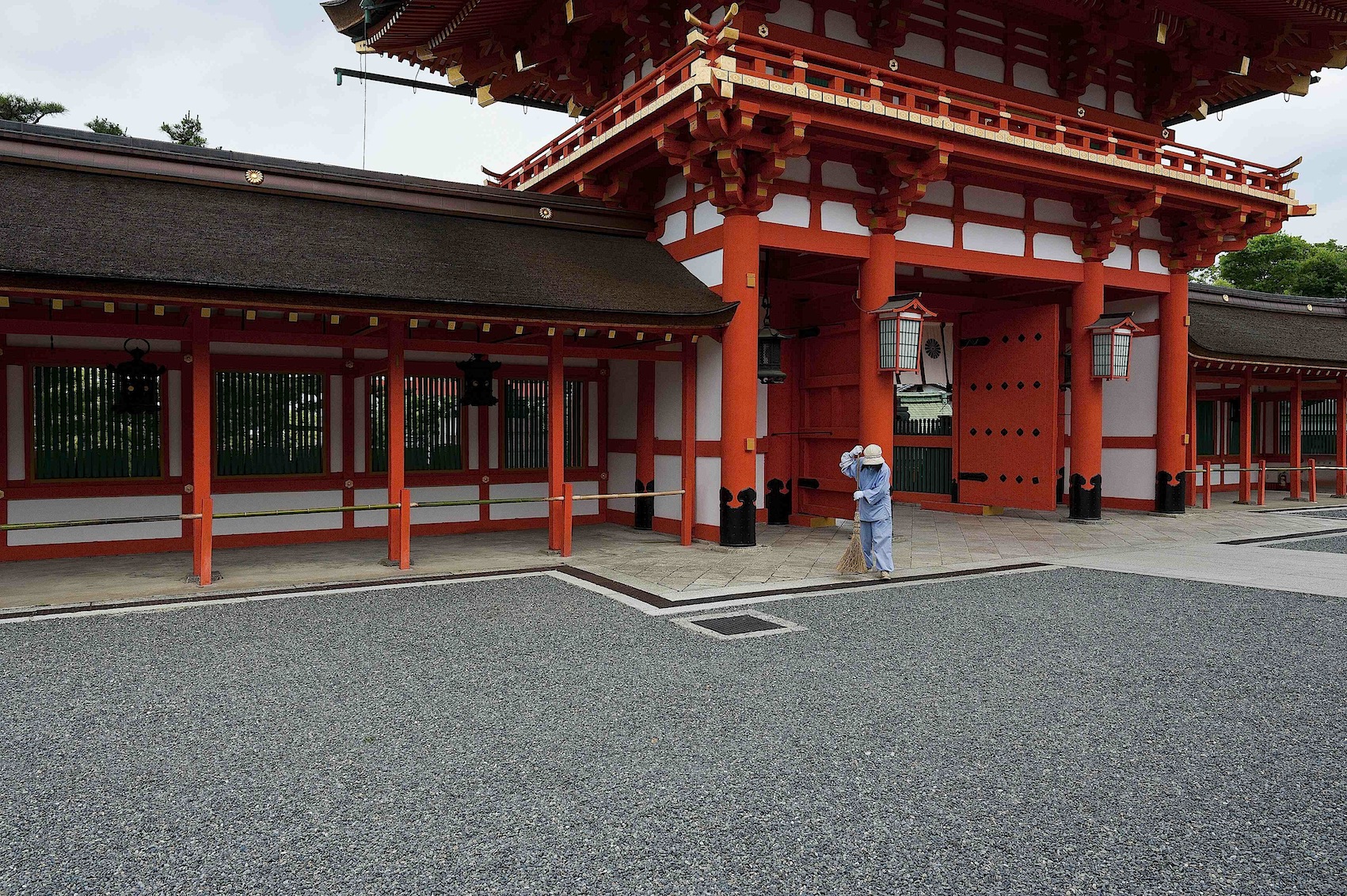
The Yasaka Sanctuary in Gion
Some say that romance lurks in the Japanese tea ceremony! I do not mean to contradict this nobility of mind and thought, but after the first quarter of an hour on my knees to photograph it in a traditional tea-house in Kyoto, some doubts came into to my mind. Romanticism or not, my experience kneeling on the tatami was intense and I consider a gift the great opportunity to participate in a very private ceremony offered to me thanks to fortuitous circumstances. For years I wanted to see Kyoto and its temples. After reading greedily “Ore giapponesi” the epitome of what you need to know about the country where the sun rises by Fosco Maraini, engaging author like few others, and then, with great attention, “Giorni giapponesi” by Angela Terzani Staude, a concentrate of criticism, sometimes ferocious, against the society so beloved by Maraini, the desire to confront the city of kimonos and geishas had increased more and more. In the spring of 2013 one of my zooms, finally, captures the elementary forms of Kinkakuji, the Golden Pavilion, the most opulent building in Japan, all covered with gold, while I am overwhelmed by noisy crowds of students on a field trip. They are all in well-ironed uniforms and all have umbrellas which are always ready to be opened to protect the uniforms from sudden downpours or too insistent rays of the sun. An hour goes by, I’m obliged by my timing to change temple, and I get nervous because notice boards, also in English, clearly define the ban on photographing the delicious sliding panels in the halls of the building Jukôin in the minimalist Daitoku Pavilion. Never mind if the same morning I can give vent to my anguish as a photographer, framing, from different angles, the fifteen rocks arranged with inscrutable patience by a few dozen monks in the pond of stones in the Zen garden of Ryoanji. Finished with the stony pond a taxi driver in white gloves and
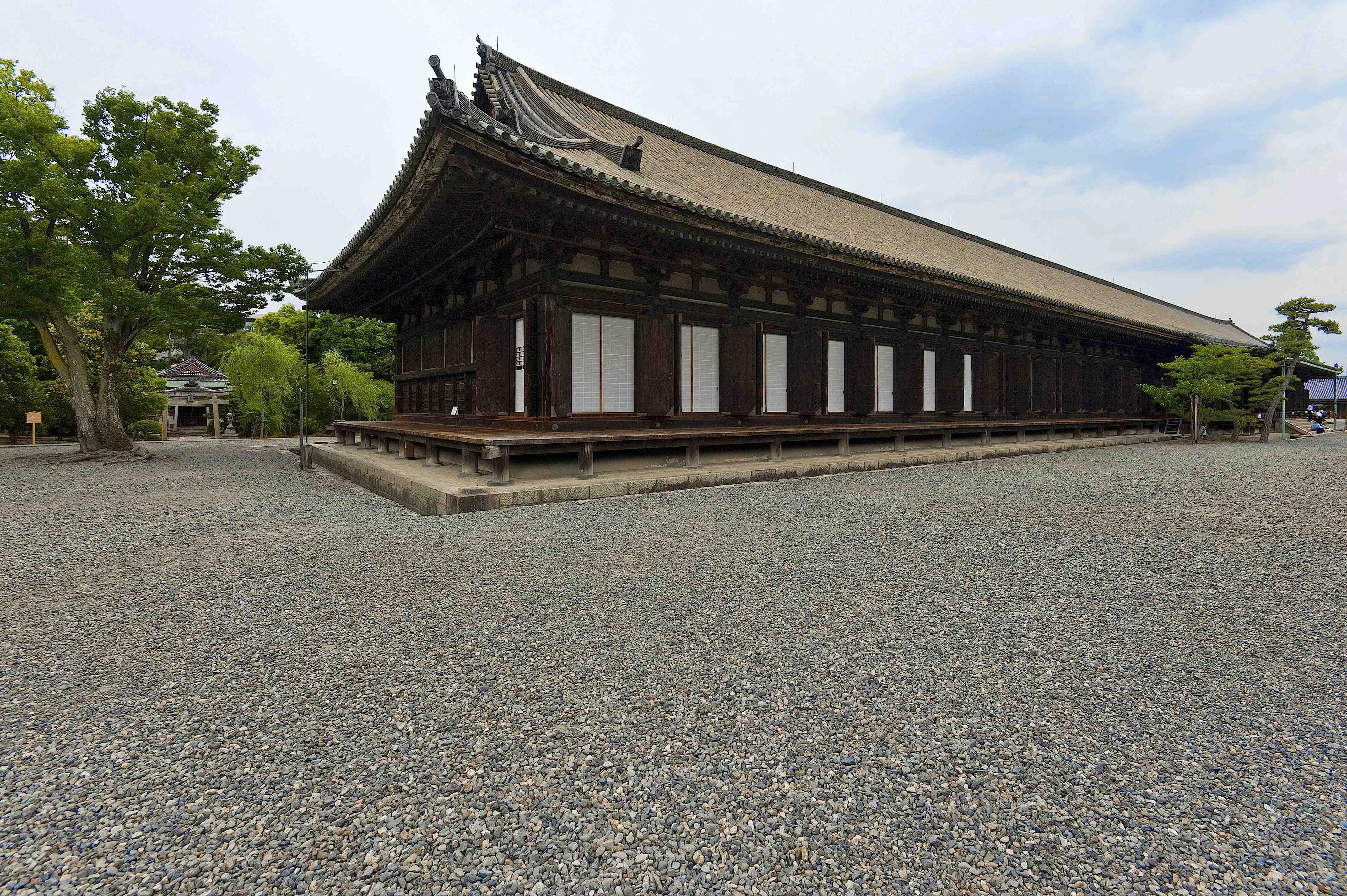
The Sanjusangen-do temple
black cap drives me up to the main entrance which opens into the walls of the temples of Nishi and Higashi. I place myself in the middle of the courtyard, which could be one of the barracks of a battalion of pilgrims, and try to organize the elegant curves of the roofs through my camera lens. Not too much time goes by and I find myself in the temple of Sanjusange-do, again up against the prohibition of taking photographs. The notices are even more explicit, here, than in Daitoku and even written in several languages, to the point of being nauseating. The temple is marked among the priorities of the things and places that I should not miss. It houses one thousand statues (in golden cypress wood, tall as a human) of Kannon, the goddess of mercy. There are no guards in the flesh in the temple, and, trusting in the mercy of Kannon for photojournalists, I steal, as secretly as far as one can, a dozen images. With the sole purpose of sharing so much beauty with those who have not had the good fortune to enter the wondrous temple, which is all dark brown and black, and which seems to also be, with its 120 meters, the longest wooden building in the world. A couple (husband and wife?) of a certain age, more or less my own, surprise me while I’m photographing. The two pretend not to have seen me break the law, carved in the notices in Roman characters as well, and show me kindness. I approach them and find out that he, Shummei, is a retired architect, and she, Yoko, a housewife with a passion for the fine arts, and have lived for years in Florence (hence their complicity?), speak pretty good Italian and run a traditional tea house where, tomorrow, they will host a very, very private ceremony. Do I want to participate? Yes, I do. Four hours on one’s knees! But, you know, the job of the photojournalist often hides unpredictable pitfalls and dangers. Of all sorts.
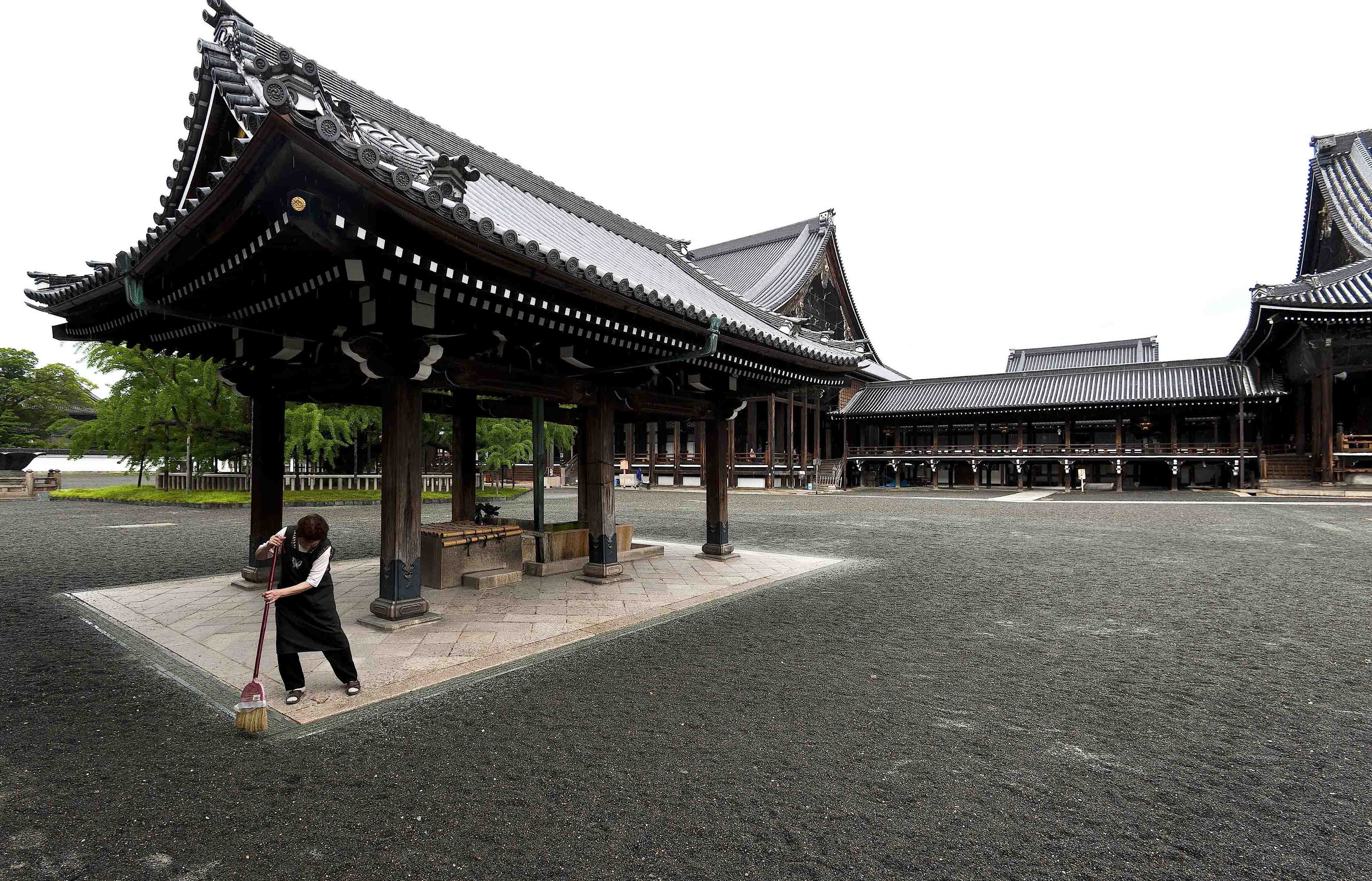
The Hongan-Ji temple
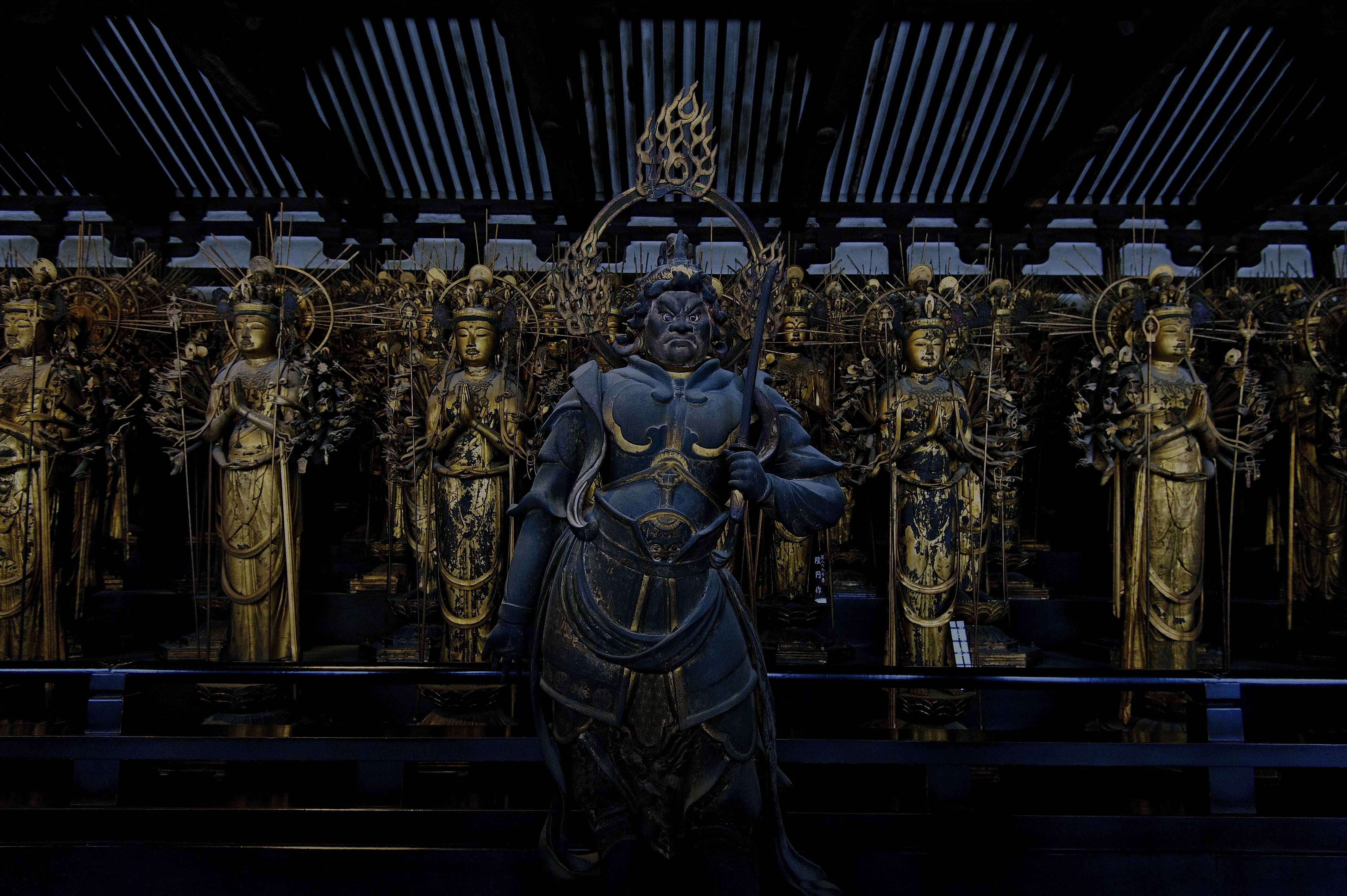
The 1001 Kannon statues in Sanjusangen-do (Rengeo-in) temple
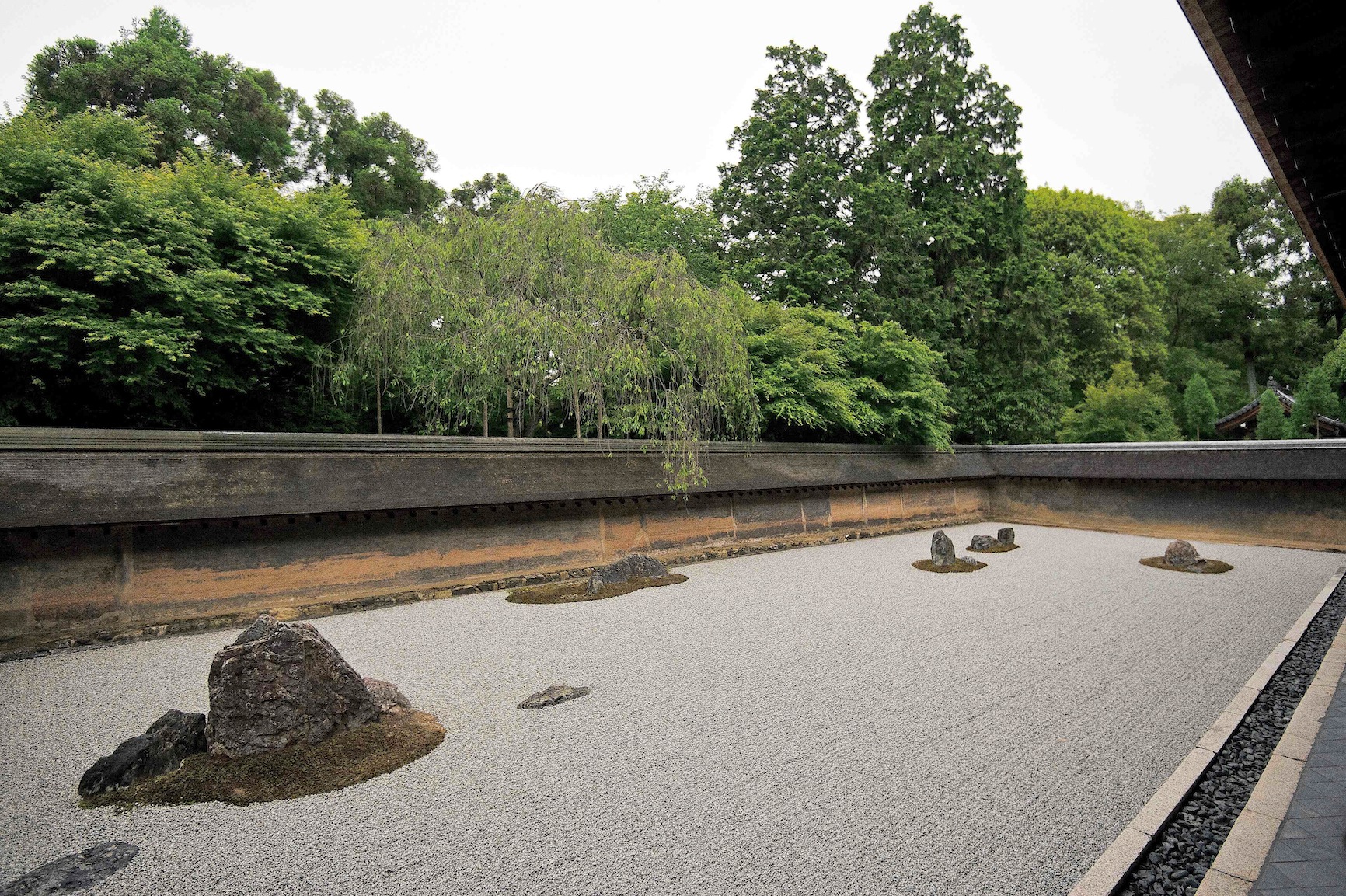
The rock garden at Ryoan-ji temple
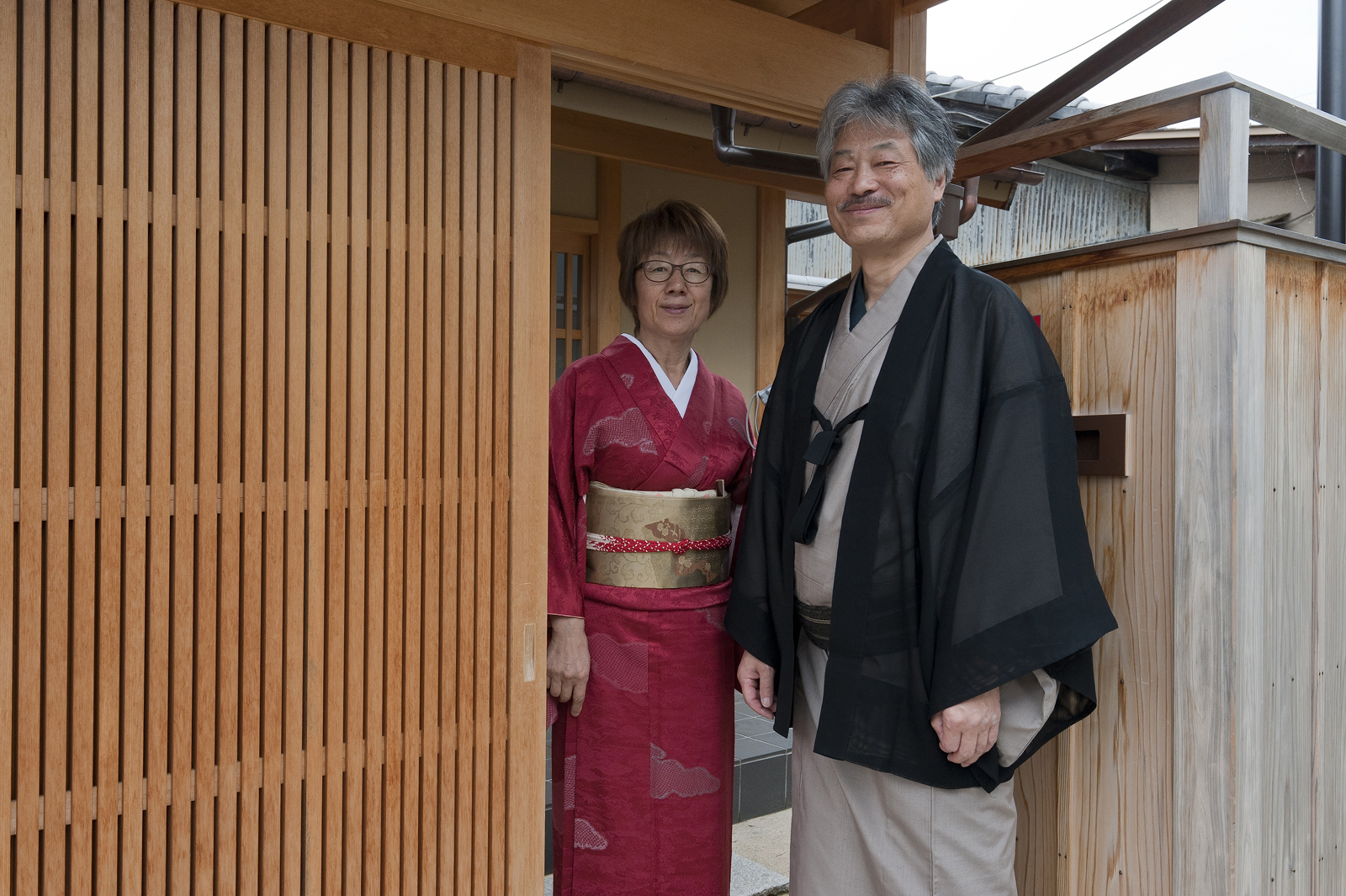
Shummei and Yoko in front of their tea-house
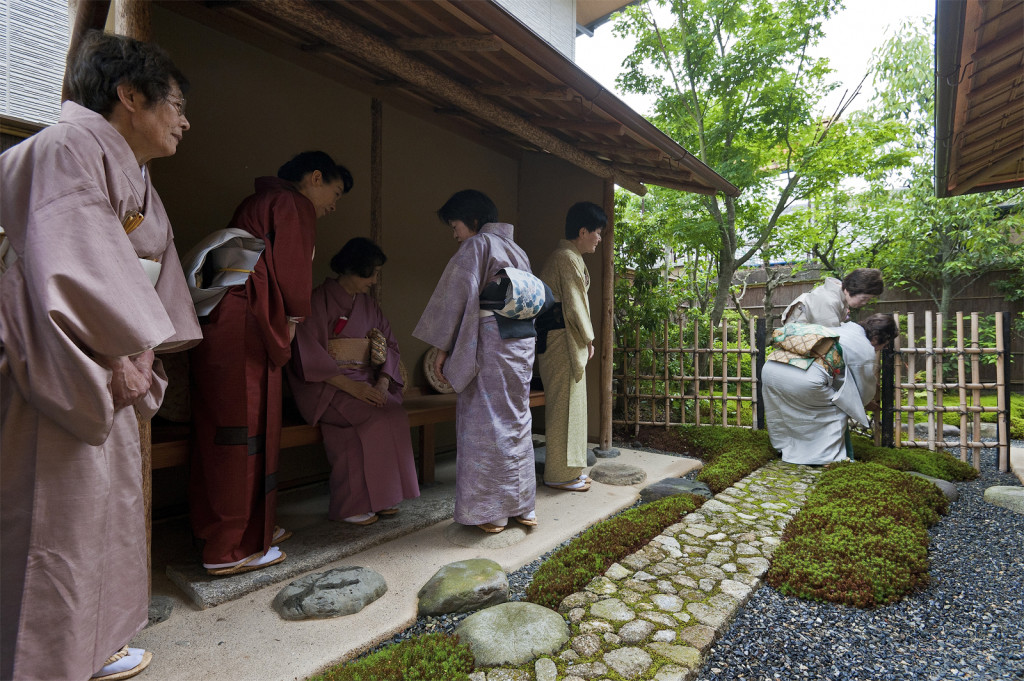
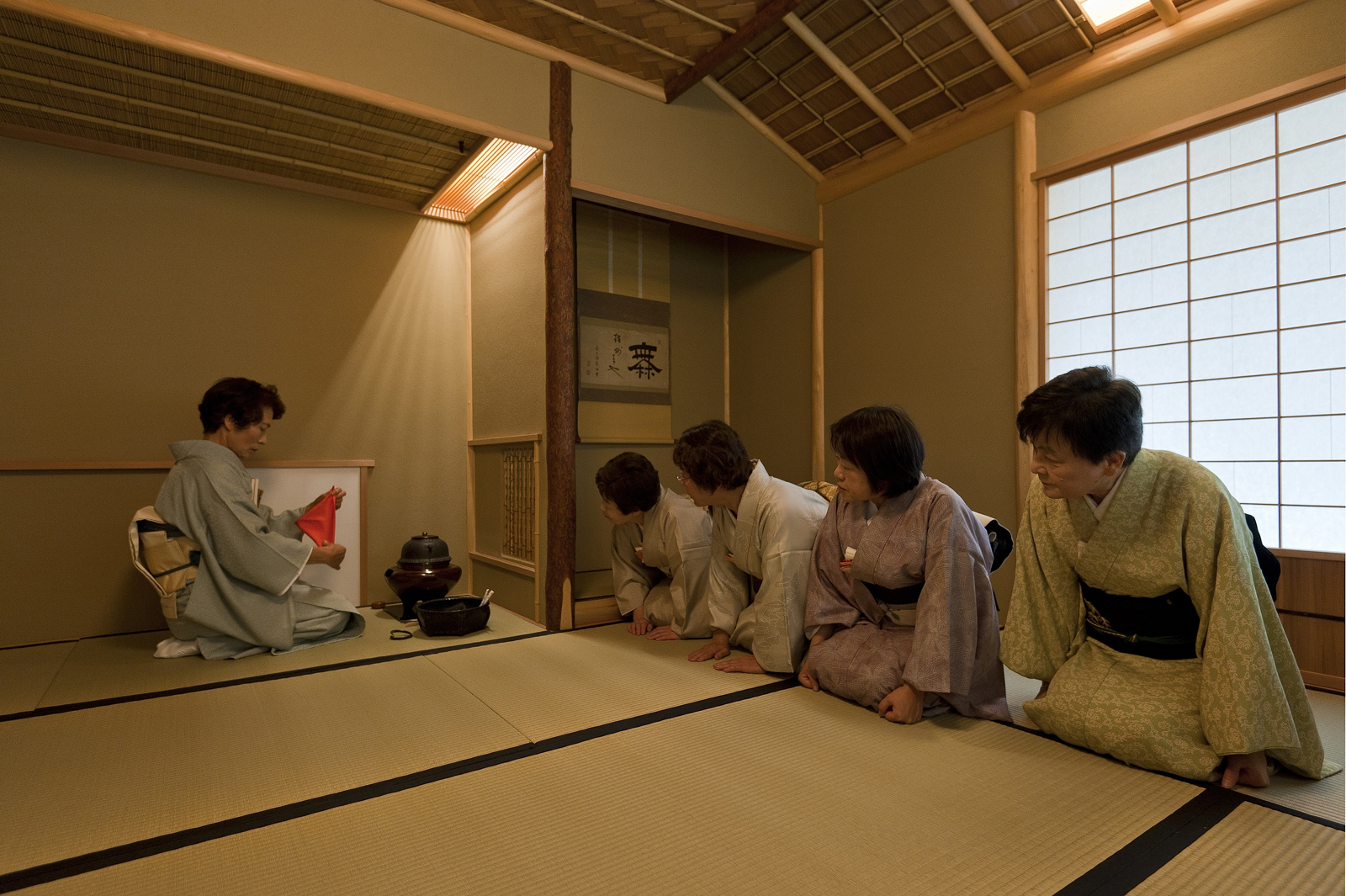
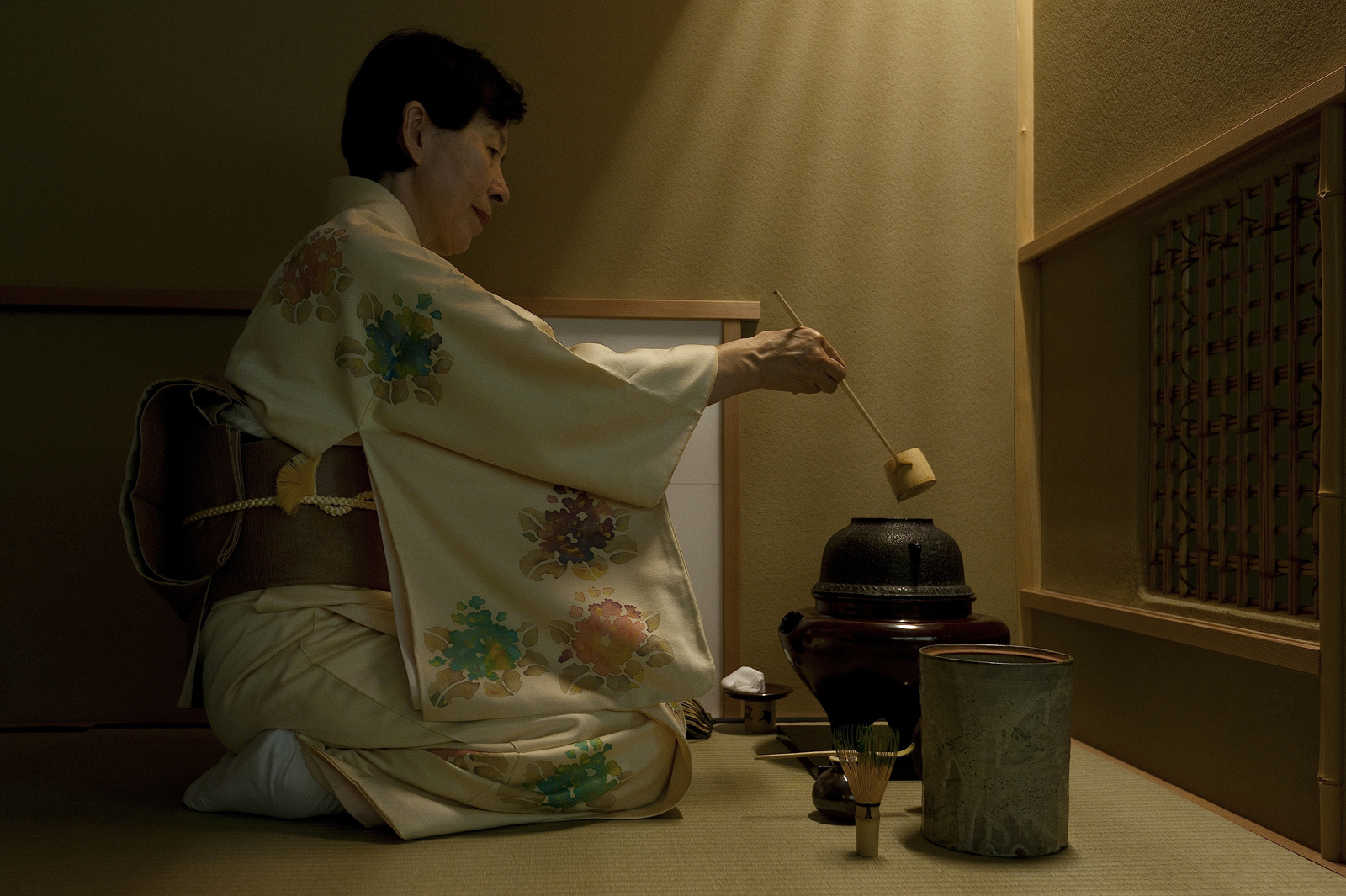
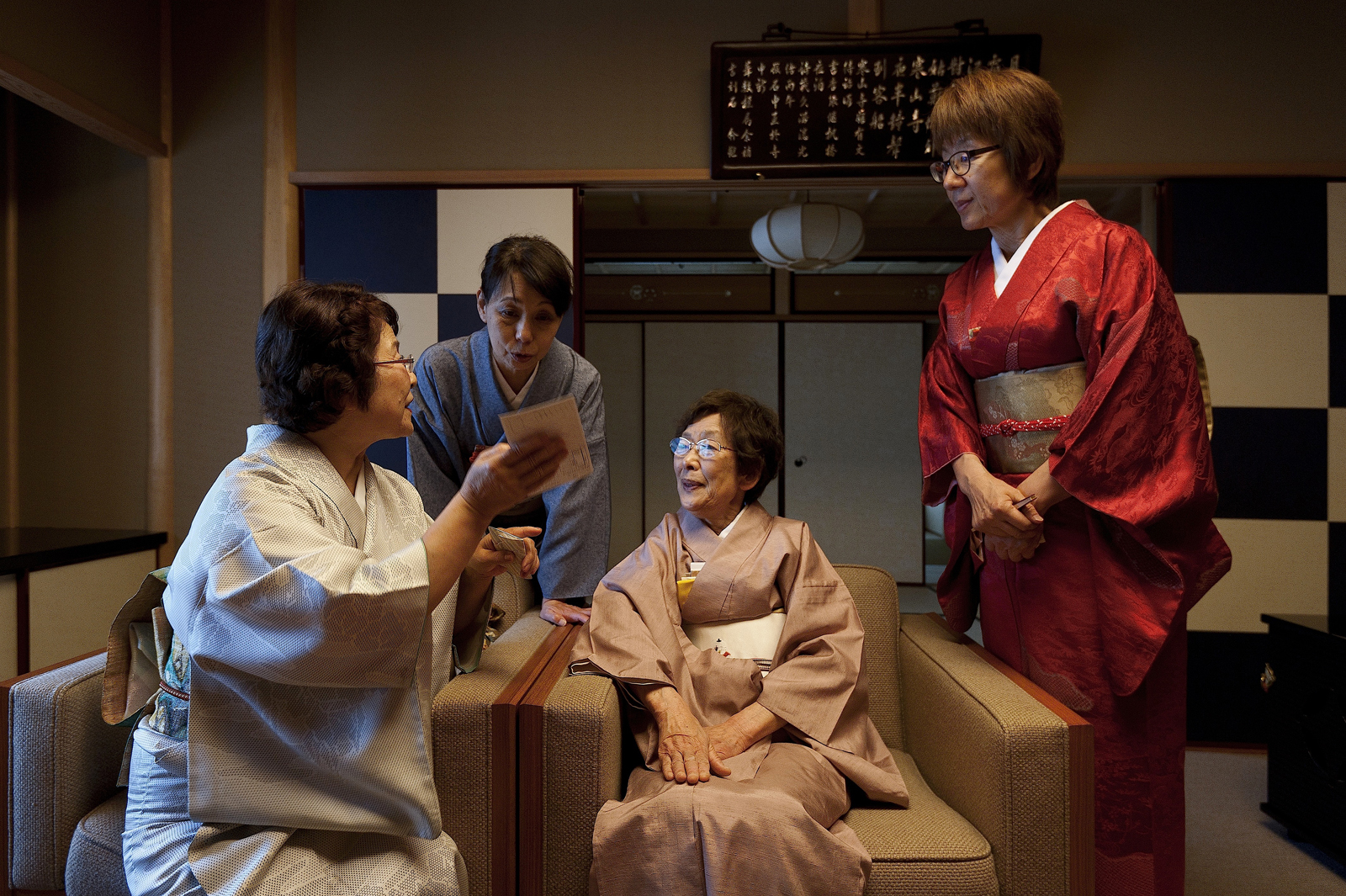
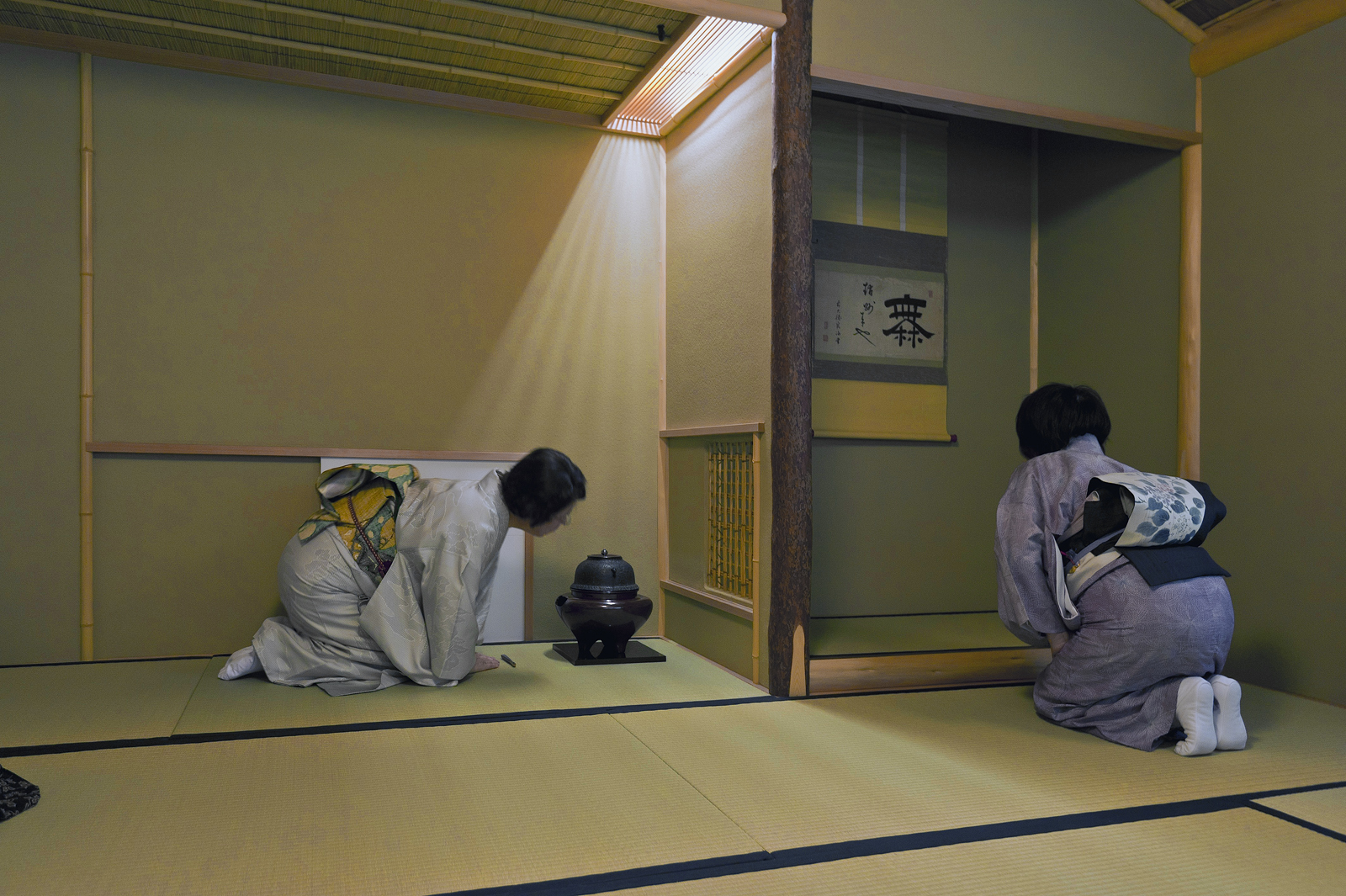 The Way of Tea or Japanese Tea Ceremony is a cultural activity involving the preparation and presentation of matcha, a powdered green tea. The manner in which it is performed, or the art of its performance, is called (o)temae. The first documented evidence of tea in Japan dates back to the 9th century, when it was taken by the Buddhist monk Eichū on his return from China, he personally prepared and served sencha (unground Japanese green tea) to the Emperor Saga in the year 815. By Imperial order just one year later, tea plantations began to be cultivated in the Kinki region of Japan. In China, tea had already been known, according to legend, for more than a thousand years and the custom of drinking it, first for medicinal, and then largely also for pleasurable reasons, was widespread throughout the country. In the early 9th century, Chinese author Lu Yu wrote The Classic of Tea, a treatise focusing on its cultivation and preparation. Lu Yu’s life had been heavily influenced by Buddhism, particularly the Zen–Chán school. His ideas would have a strong influence in the development of the Japanese tea ceremony. Around the end of the 12th century, the style of tea preparation called “tencha”, in which powdered matcha was placed into a bowl, hot water added, and the tea and hot water whipped together, was introduced to Japan by Eisai, another monk, on his return from China. He also took tea seeds back with him, which eventually produced tea that was of the most superb quality in all of Japan. By the 13th century, when the Kamakura Shogunate ruled the nation and tea and the luxuries associated with it became a kind of status symbol among the warrior class, there arose tea-tasting parties wherein contestants could win extravagant prizes for guessing the best quality tea—that grown in Kyoto, deriving from the seeds that Eisai brought from China. The Japanese tea ceremony developed as a “transformative practice”, and began to evolve its own aesthetic, in particular that of “sabis” and “wabis” principles. “Wabi” represents the inner, or spiritual, experiences of human lives. Its original meaning indicated quiet or sober refinement, or subdued taste “characterized by humility, restraint, simplicity, naturalism, profundity, imperfection, and asymmetry” and emphasizes simple, unadorned objects and architectural space, and celebrates the mellow beauty that time and care impart to materials. “Sabi,” on the other hand, represents the outer, or material side of life. Particularly among the nobility, understanding emptiness was considered the most effective means to spiritual awakening, while embracing imperfection was honoured as a healthy reminder to cherish our unpolished selves, here and now, just as we are – the first step to “satori” or enlightenment.
The Way of Tea or Japanese Tea Ceremony is a cultural activity involving the preparation and presentation of matcha, a powdered green tea. The manner in which it is performed, or the art of its performance, is called (o)temae. The first documented evidence of tea in Japan dates back to the 9th century, when it was taken by the Buddhist monk Eichū on his return from China, he personally prepared and served sencha (unground Japanese green tea) to the Emperor Saga in the year 815. By Imperial order just one year later, tea plantations began to be cultivated in the Kinki region of Japan. In China, tea had already been known, according to legend, for more than a thousand years and the custom of drinking it, first for medicinal, and then largely also for pleasurable reasons, was widespread throughout the country. In the early 9th century, Chinese author Lu Yu wrote The Classic of Tea, a treatise focusing on its cultivation and preparation. Lu Yu’s life had been heavily influenced by Buddhism, particularly the Zen–Chán school. His ideas would have a strong influence in the development of the Japanese tea ceremony. Around the end of the 12th century, the style of tea preparation called “tencha”, in which powdered matcha was placed into a bowl, hot water added, and the tea and hot water whipped together, was introduced to Japan by Eisai, another monk, on his return from China. He also took tea seeds back with him, which eventually produced tea that was of the most superb quality in all of Japan. By the 13th century, when the Kamakura Shogunate ruled the nation and tea and the luxuries associated with it became a kind of status symbol among the warrior class, there arose tea-tasting parties wherein contestants could win extravagant prizes for guessing the best quality tea—that grown in Kyoto, deriving from the seeds that Eisai brought from China. The Japanese tea ceremony developed as a “transformative practice”, and began to evolve its own aesthetic, in particular that of “sabis” and “wabis” principles. “Wabi” represents the inner, or spiritual, experiences of human lives. Its original meaning indicated quiet or sober refinement, or subdued taste “characterized by humility, restraint, simplicity, naturalism, profundity, imperfection, and asymmetry” and emphasizes simple, unadorned objects and architectural space, and celebrates the mellow beauty that time and care impart to materials. “Sabi,” on the other hand, represents the outer, or material side of life. Particularly among the nobility, understanding emptiness was considered the most effective means to spiritual awakening, while embracing imperfection was honoured as a healthy reminder to cherish our unpolished selves, here and now, just as we are – the first step to “satori” or enlightenment.
By the 16th century, tea drinking had spread to all levels of society in Japan. Sen no Rikyū and his work Southern Record, perhaps the most well-known — and still revered — historical figure in tea ceremony, followed his master Takeno Jōō’s concept of ichi-go ichi-e, a philosophy that each meeting should be treasured, for it can never be reproduced. His teachings perfected many newly developed forms in architecture and gardens, art, and the full development of the “way of tea”. The principles he set forward — harmony, respect, purity, and tranquility are still central to tea ceremony. A purpose-built room designed for the wabi style of tea is called a chashitsu, and is ideally 4.5 tatami in floor area. It has a low ceiling; a hearth built into the floor; shoji screens; an alcove for hanging scrolls and placing other decorative objects; and several entrances for host and guests. It also has an attached preparation area known as a mizuya. Building materials and decorations are deliberately simple and rustic in wabi style tea rooms. Chashitsu can also refer to free-standing buildings for tea ceremony. Known in English as tea houses, such structures may contain several tea rooms of different sizes and styles, dressing and waiting rooms, and other amenities, and be surrounded by a tea garden called a roji. There are two main ways of preparing matcha for the tea ceremony: thick (koicha) and thin (usucha), with the best quality tea leaves used in preparing thick tea. As the terms imply, koicha is a thick blend of matcha and hot water that requires about three times as much tea to the equivalent amount of water than usucha. To prepare usucha, matcha and hot water are whipped using the tea whisk (chasen), while koicha is kneaded with the whisk to smoothly blend the large amount of powdered tea with the water. Thin tea is served to each guest in an individual bowl, while one bowl of thick tea is shared among several guests. This style of sharing a bowl of koicha first appeared in historical documents in 1586, and is a method considered to have been invented by Sen no Rikyū. Procedures vary from school to school, and with the time of year, time of day, venue, and other considerations.
The guests arrive a little before the appointed time and enter an interior waiting room, where they store unneeded items such as coats, and put on fresh tabi. Ideally, the waiting room has a tatami floor and an alcove (tokonoma), in which is displayed a hanging scroll which may allude to the season, the theme of the chaji, or some other appropriate theme. The guests are served a cup of the hot water, kombu tea, roasted barley tea, or sakurayu. When all the guests have arrived and finished their preparations, they proceed to the outdoor waiting bench in the roji, where they remain until summoned by the host. Following a silent bow between host and guests, the guests proceed in order to a stone basin where they ritually purify themselves by washing their hands and rinsing their mouths with water at tsukubai, and then continue along the roji to the tea house. They remove their footwear and enter the tea room through a small “crawling-in” door (nijiri-guchi), and proceed to view the items placed in the tokonoma and any tea equipment placed ready in the room, and are then seated seiza-style on the tatami in order of prestige. When the last guest has taken their place, they close the door with an audible sound to alert the host, who enters the tea room and welcomes each guest, and then answers questions posed by the first guest about the scroll and other items.
The chaji begins in the cool months with the laying of the charcoal fire which is used to heat the water. Following this, guests are served a meal in several courses accompanied by sake and followed by a small sweet (wagashi) eaten from special paper called kaishi, which each guest carries, often in a decorative wallet or tucked into the breast of the kimono. After the meal, there is a break called a nakadachi, during which the guests return to the waiting shelter until summoned again by the host, who uses the break to sweep the tea room, take down the scroll and replace it with a flower arrangement, open the tea room’s shutters, and make preparations for serving the tea. Having been summoned back to the tea room by the sound of a bell or gong rung in prescribed ways, the guests again purify themselves and examine the items placed in the tea room. The host then enters, ritually cleanses each utensil — including the tea bowl, whisk, and tea scoop — in the presence of the guests in a precise order and using prescribed motions, and places them in an exact arrangement according to the particular temae procedure being performed. When the preparation of the utensils is complete, the host prepares thick tea. Bows are exchanged between the host and the guest receiving the tea. The guest then bows to the second guest, and raises the bowl in a gesture of respect to the host. The guest rotates the bowl to avoid drinking from its front, takes a sip, and compliments the host on the tea. After taking a few sips, the guest wipes clean the rim of the bowl and passes it to the second guest. The procedure is repeated until all guests have taken tea from the same bowl; each guest then has an opportunity to admire the bowl before it is returned to the host, who then cleanses the equipment and leaves the tea room. The host will then proceed with the preparation of an individual bowl of thin tea to be served to each guest. While in earlier portions of the gathering conversation is limited to a few formal comments exchanged between the first guest and the host, in the usucha portion, after a similar ritual exchange, the guests may engage in casual conversation. After all the guests have taken tea, the host cleans the utensils in preparation for putting them away. The guest of honour will request that the host allow the guests to examine some of the utensils, and each guest in turn examines each item, including the tea caddy and the tea scoop. The items are treated with extreme care and reverence as they may be priceless, irreplaceable, handmade antiques, and guests often use a special brocaded cloth to handle them. The host then collects the utensils, and the guests leave the tea house. The host bows from the door, and the ceremony is over. A tea ceremony can last up to four hours, depending on the type of ceremony performed, the number of guests, and the types of meal and tea served.
tea ceremony kyoto